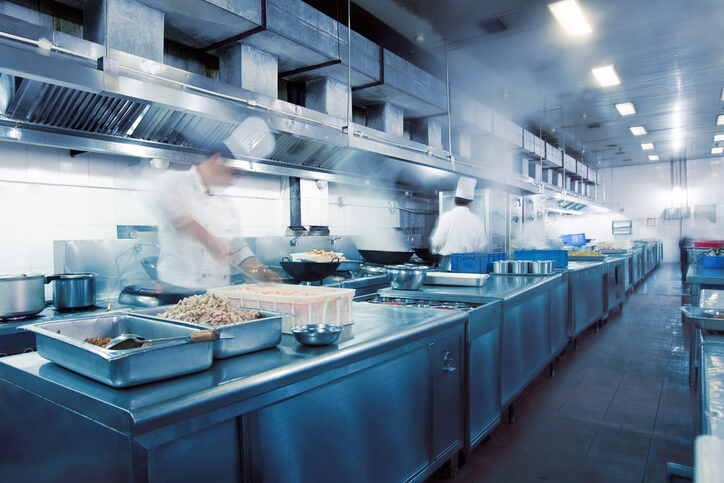Commercial kitchens are the nerve center of a food-based business. Any problems in the kitchen can quickly spin out of control and harm the staff, customers, and even the business. A well-run kitchen not only requires a dedicated staff, it also takes a well-designed HVAC system. If the kitchen doesn’t have a proper make up air unit, it can make working in the kitchen more dangerous and create a domino effect to everyone exposed, including harming the dining experience for customers, and ruining the business.
Special HVAC Issues Facing Restaurants and Commercial Kitchens
Commercial kitchens use powerful exhaust fans to draw out air from the kitchen. Some kitchens may even have two separate exhaust systems-one for steam-generating appliances and one for heat- and grease-generating appliances.
If the HVAC system is designed properly, even in an airtight building, some replacement air should enter the kitchen from adjacent areas, such as the dining room. But, if too much air is moving from outside areas into the kitchen it can cause a variety of problems.
Here are some of the issues that happen when too much outside air circulates into the kitchen to replace the air removed by the exhaust system:
- Odor leak
- Negative air pressure
- Back drafting
- HVAC system issues
- Performance issues with kitchen exhaust hoods
- Air quality problems
- Increased energy costs
Only about 10% of make up air should come from adjacent areas. The other 90% of the supply air should come from a unit dedicated to the kitchen. When the make up air percentage goes above 10%, drafts begin occurring in the front of the restaurant. Smells from the kitchen leak out into the dining area. Often the kitchen smells combine in unpleasant ways and can ruin the atmosphere.
Negative air pressure is also created. This results in things like doors sticking or suddenly slamming. It creates drafts and makes it hard to control the temperature in the kitchen and the rest of the building. In turn, this can overtax an HVAC system. Fans or heaters may be brought in around the periphery of the restaurants, but they only increase the energy costs without being effective due to the air circulation created by the negative air pressure.
In the kitchen, the negative air pressure can make it hard for the exhaust hoods to work properly and can even cause backdrafts. The backdrafts lower the air quality and can further increase energy costs.
Why Evaporative Cooling Systems Work Best for Make Up Air
The solution is simple. Install a dedicated unit to supply make up air to the kitchen. While there are many options in HVAC design, the most efficient choice for a make up air unit is an evaporative cooling system.
These systems will provide a steady supply of fresh outside air. This will help with air quality, temperature control, and odor control.
It not only solves all of the issues created by a negative air pressure situation, but the evaporative coolers are much more cost-efficient to run.
Using an evaporative cooling system as a make up air unit for a commercial kitchen makes the kitchen safer and more pleasant, while also ensuring the activities in the kitchen do not negatively impact the experience of the customers in the dining areas.
Many restaurant owners, even extremely experienced and sophisticated ones, do not fully understand the issues that negative air pressure can cause and how not have having a dedicated make up air unit negatively impacts their bottom line.
It is important that HVAC designers and technicians take the time to educate owners of commercial kitchens about the importance of replacement air as part of the overall HVAC design for the space.
Want to learn how evaporative cooling systems work? Read the blog post on The Five Biggest Questions on Evaporative Cooling and learn why evaporative cooling is an ideal system for commercial kitchens.


